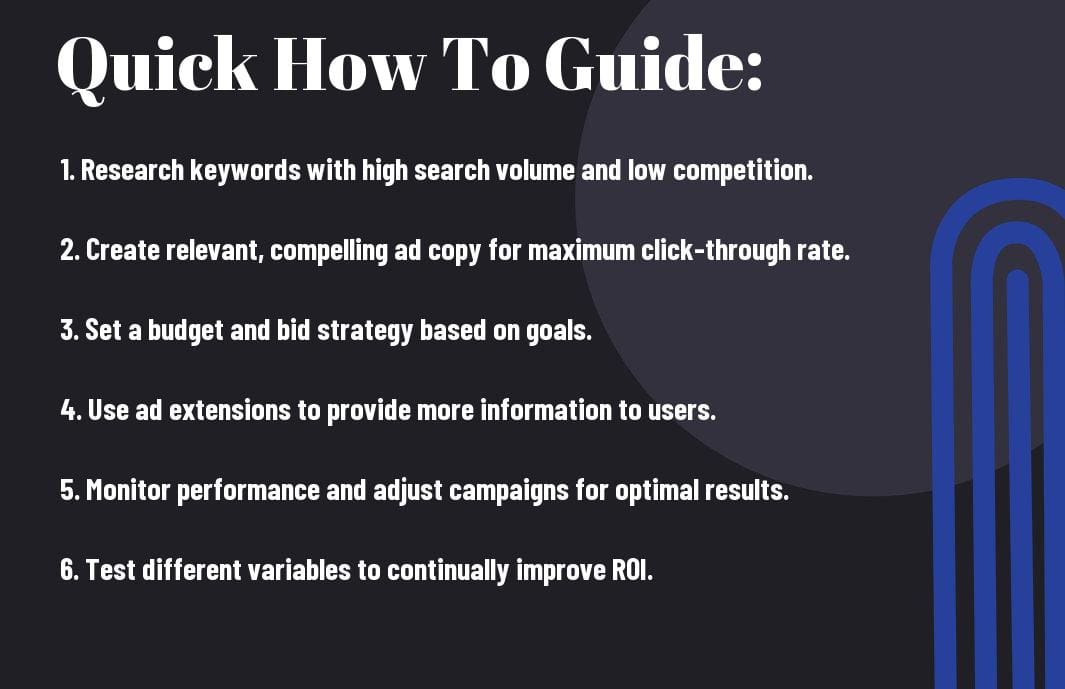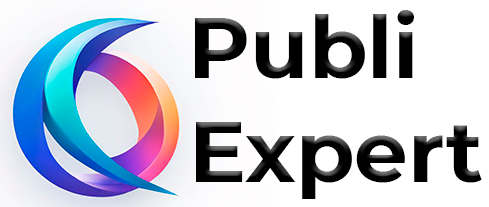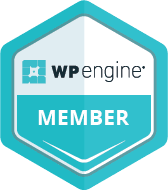There’s no denying the power of Pay-Per-Click (PPC) advertising in today’s digital marketing landscape. When done right, PPC campaigns can drive targeted traffic to your website and generate leads and sales. However, without a solid strategy in place, it’s easy to overspend and see little return on investment. In this comprehensive guide, we’ll walk you through the best practices for maximizing your ROI with PPC advertising. From keyword research to ad copy optimization and landing page design, we’ll cover all the imperative steps you need to take to ensure your PPC campaigns deliver measurable results.
Key Takeaways:
- Keyword Research is Essential: Conduct thorough keyword research to identify the most relevant and high-performing keywords to include in your PPC campaigns.
- Optimize Ad Copy and Landing Pages: Create compelling ad copy and ensure that your landing pages are aligned with the ad messaging to improve click-through rates and conversions.
- Track and Analyze Performance: Monitor your PPC campaigns regularly, track key metrics such as CTR and ROI, and make data-driven decisions to continually optimize and improve campaign performance.

Setting Up for Success
How to Define Your PPC Goals
If you want to maximize your ROI with pay-per-click advertising, you need to start by clearly defining your goals. Are you looking to drive traffic to your website, increase leads, or boost sales? With a well-defined goal in mind, you can tailor your PPC campaign to achieve specific objectives.
Selecting the Right Keywords for Your Campaign
Even before launching your PPC campaign, selecting the right keywords is crucial for its success. Your keywords should be relevant to your business and target audience while also having a high search volume. By conducting thorough keyword research, you can ensure that your ads reach the right people at the right time.
Your choice of keywords can make or break your PPC campaign. Make sure to consider long-tail keywords and negative keywords to refine your targeting effectively. This will help you attract quality traffic and improve your chances of conversion.
Creating Compelling Ad Copy: Tips and Best Practices
Tips to creating compelling ad copy:
- Use main keywords strategically in your ad copy
- Highlight your unique selling points to differentiate yourself from competitors
- Include a clear call-to-action to prompt user engagement
This approach will help increase your ad relevance and click-through rates. This can ultimately lead to higher conversions and a better return on investment for your PPC campaign.
A well-crafted ad copy is crucial in capturing the attention of your target audience and enticing them to click on your ad. Ensure that your messaging is clear, concise, and relevant to maximize your chances of success.
Landing Page Optimization
After driving traffic to your website through pay-per-click advertising, the next critical step is optimizing your landing pages to maximize conversions. A well-designed landing page can significantly impact your return on investment (ROI) by guiding visitors towards taking the desired action, whether it’s making a purchase, signing up for a newsletter, or filling out a form.
Factors Influencing Landing Page Success
Landing page success depends on various factors, including relevance to the ad that leads visitors there, clarity of the offer, compelling call-to-action (CTA), visual appeal, loading speed, and mobile responsiveness. It’s important to ensure that your landing page delivers on the promise made in the ad, maintains a clear and concise message, and provides a seamless user experience to maximize conversions.
- Relevance to the ad
- Clarity of the offer
- Compelling call-to-action (CTA)
- Visual appeal
- Loading speed
- Mobile responsiveness
Knowing how to optimize these factors can greatly impact the effectiveness of your PPC campaigns and ultimately your ROI.
How to Construct High-Converting Landing Pages
Assuming you have identified the key factors that influence landing page success, the next step is to construct high-converting landing pages that drive results. Start by identifying your target audience and tailoring the message to their needs, desires, and pain points. Utilize clear and compelling headlines, persuasive copy, and high-quality visuals to engage visitors and lead them towards the desired action.
Plus, make sure your landing page forms are easy to fill out, provide social proof such as testimonials or reviews, and use visual cues to direct attention to the CTA button. A/B testing different elements on your landing pages can help you optimize for better performance over time.
Managing Your PPC Bids
How to Determine Optimal Bidding Strategies
For businesses utilizing pay-per-click (PPC) advertising, managing bids effectively is necessary for maximizing return on investment (ROI). Determining the optimal bidding strategy involves a complex analysis of various factors to ensure that your ads receive the best visibility while controlling costs.
Clearly, one of the fundamental considerations when determining bidding strategies is understanding your goals and budget constraints. Whether your aim is to increase website traffic, generate leads, or drive conversions, aligning your bidding strategy with these objectives is crucial. Additionally, analyzing keyword performance, competitor activity, and industry trends can help in setting competitive bids that capture your target audience’s attention.
Tips for Adjusting Bids Based on Performance
Even with careful planning, the dynamic nature of PPC advertising demands constant monitoring and adjustments to bidding strategies based on performance metrics. For instance, if certain keywords are driving high-quality traffic and conversions, consider increasing bids to enhance their visibility and capture more leads. On the other hand, keywords with low click-through rates or high costs may require bid decreases to optimize campaign performance.
- Monitoring keyword performance regularly is vital for identifying underperforming elements that need bid adjustments.
- Implementing bid modifiers for different devices or locations can help tailor bids to specific audiences and improve ad relevance.
- Perceiving shifts in competition and market demand can guide strategic bid changes to maintain competitiveness and maximize ROI.
Tracking and Analytics
Keep Maximizing ROI with Pay-Per-Click Advertising: A Guide in mind as you investigate the world of Pay-Per-Click (PPC) advertising. Tracking and analytics are crucial components of any successful PPC campaign. They provide valuable insights into the performance of your ads, helping you make data-driven decisions to maximize your return on investment (ROI).
How-to Implement Effective Tracking Solutions
The implementation of effective tracking solutions is necessary for measuring the success of your PPC campaigns. Utilizing tracking pixels and conversion tracking tools can help you monitor the performance of your ads accurately. By setting up conversion tracking, you can track specific actions that users take on your website after clicking on your ads, such as purchases, sign-ups, or downloads. This data is invaluable for optimizing your campaigns and maximizing your ROI.
Understanding the Data: Tips for Analyzing PPC Metrics
With Pay-Per-Click advertising analytics, it’s crucial to understand the data beyond surface-level metrics. Click-through rate (CTR), conversion rate, and cost per click (CPC) are necessary metrics to monitor. Analyzing these metrics can help you identify opportunities for improvement and adjust your strategy accordingly. After all, a deeper understanding of your data will lead to more informed decisions and better results.
- CTR: The percentage of users who click on your ad after seeing it
- Conversion Rate: The percentage of users who complete a desired action on your website
- CPC: The cost you pay for each click on your ad
After analyzing these metrics, you can identify areas of your PPC campaigns that may need optimization, such as ad copy, landing pages, or targeting options. By continuously monitoring and analyzing your PPC data, you can refine your strategies to improve performance and achieve your advertising goals. Strong Understanding of these key metrics will be vital in maximizing your ROI with PPC advertising.
Ongoing PPC Management
Now that your pay-per-click (PPC) campaigns are up and running, it’s crucial to focus on ongoing management to ensure you are maximizing your return on investment (ROI). This involves monitoring performance, making adjustments, and continuously optimizing your campaigns to drive better results.
The Role of A/B Testing in Enhancing PPC ROI
Even the most well-crafted PPC campaigns can benefit from A/B testing. By creating multiple variations of your ads, landing pages, or targeting criteria, you can identify which elements perform best and optimize accordingly. Testing different ad copy, images, calls-to-action, and landing page designs can help you fine-tune your campaigns for maximum effectiveness.
How-to Optimize Campaigns with Continuous Improvements
Even after launching successful PPC campaigns, the work doesn’t stop there. To continually improve your ROI, it’s necessary to monitor key metrics regularly and make data-driven decisions. Adjust your bidding strategies, ad schedules, target keywords, and audience targeting based on performance data to optimize your campaigns for success.
Optimize: By consistently analyzing your PPC campaign data and implementing changes based on performance insights, you can ensure that your advertising budget is being spent effectively. Continuous improvements will help you stay ahead of the competition and drive higher ROI over time.
Advanced PPC Strategies
Despite having basic knowledge of pay-per-click advertising, there are advanced strategies that can further enhance your ROI. By implementing these tactics, you can see a significant improvement in your ad performance and overall campaign success. Let’s explore some of these advanced PPC strategies:
-
How to Employ Retargeting for Increased Conversions Advanced retargeting involves targeting users who have previously interacted with your website or ads but did not convert. By using tracking pixels and cookies, you can show targeted ads to these users as they browse the web. This strategy keeps your brand top of mind and encourages users to return and complete the desired action. This method is highly effective in increasing conversions and maximizing ROI. -
Utilizing Geographic and Demographic Targeting Increased targeting based on geographic location and demographic information allows you to reach a more specific audience that is likely to convert. By tailoring your ad copy, offers, and landing pages to different regions and demographics, you can significantly improve ad relevance and engagement. This targeted approach helps you allocate your budget more effectively and drive higher conversion rates.
How to Employ Retargeting for Increased Conversions
Advanced retargeting involves targeting users who have previously interacted with your website or ads but did not convert. By using tracking pixels and cookies, you can show targeted ads to these users as they browse the web. This strategy keeps your brand top of mind and encourages users to return and complete the desired action. This method is highly effective in increasing conversions and maximizing ROI.
Utilizing Geographic and Demographic Targeting
Increased targeting based on geographic location and demographic information allows you to reach a more specific audience that is likely to convert. By tailoring your ad copy, offers, and landing pages to different regions and demographics, you can significantly improve ad relevance and engagement. This targeted approach helps you allocate your budget more effectively and drive higher conversion rates.
Summing up
Conclusively, maximizing your ROI with pay-per-click advertising requires a strategic approach that involves thorough keyword research, compelling ad copy, effective landing pages, and continuous monitoring and optimization. By following the steps outlined in this how-to guide, you can create successful PPC campaigns that drive relevant traffic to your website and generate a positive return on investment.
Note, PPC advertising is a powerful tool that can help you reach your target audience and achieve your business goals. By implementing the best practices discussed in this guide and staying informed about the latest trends and updates in the industry, you can leverage the full potential of PPC advertising and see a significant boost in your ROI.
FAQ
Q: What is Pay-Per-Click Advertising?
A: Pay-Per-Click Advertising, or PPC, is an online advertising model where advertisers pay a fee each time their ad is clicked. It is a way of buying visits to your site rather than attempting to “earn” those visits organically.
Q: How does Pay-Per-Click Advertising work?
A: PPC works by allowing advertisers to bid for ad placement in a search engine’s sponsored links when someone searches on a keyword that is related to their business offering. Advertisers only pay when their ad is clicked.
Q: What are the benefits of using Pay-Per-Click Advertising?
A: Some benefits of using PPC advertising include instant visibility, targeted reach, measurable results, control over budget, and the ability to test and optimize campaigns in real-time.
Q: How can I maximize ROI with Pay-Per-Click Advertising?
A: To maximize ROI with PPC advertising, focus on relevant keywords, compelling ad copy, optimized landing pages, targeted audiences, consistent monitoring and optimization, and tracking conversions to make data-driven decisions.
Q: What are some common mistakes to avoid in Pay-Per-Click Advertising?
A: Common mistakes to avoid in PPC advertising include targeting broad keywords, neglecting negative keywords, not optimizing landing pages, ignoring ad extensions, not setting clear goals, and not tracking and analyzing data regularly.
Q: How important is keyword research in Pay-Per-Click Advertising?
A: Keyword research is crucial in PPC advertising as it helps you identify the right keywords to target, understand search intent, discover new opportunities, and optimize your campaigns for better performance and higher ROI.
Q: What are some tips for successful Pay-Per-Click Advertising campaigns?
A: Some tips for successful PPC campaigns include setting clear goals, conducting thorough keyword research, writing compelling ad copy, optimizing landing pages for conversions, testing and tweaking campaigns, and staying updated on industry trends.




